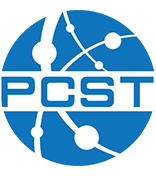Practice and Quantitative Study on Visualization of Cutting-Edge Science
Author: Guoyan Wang, Department of Scinece Communication, University of Science and Technology of China, China
Science and art, which like two sides of a coin are often combined together since the development of technology on computer graph since 1970s. For some top scientific journals such as Nature, Science and Cell (CNS), the images used on the cover are not only a display of the journal’s creation style, but also a visualized carrier of the scientific results, which are often submitted by the research team themselves and created by some artists. After published on academic journals, the image and the science achievements then become sci-tech news to the public via mass media.
The author has worked on more than twenty forefront science achievements, created vivid images for cover story of Nature, Science and scientific news image. According to our statistical analysis, the impact of the cover story article is much higher than that of the common articles in the same journal according to five-year citations, which may come from both the editor’s excellent judgement about the most significant paper and the alert of value by its appearance as a cover story. The degree of visualization used for top journals is generally higher than that used for regular journals. Furthermore, quantitative analysis also supports that significant differences do exist in visualization among various disciplines in both top 20 journals in Journal Citation Reports (JCR) and all scientific journals in the National Library of China. Some disciplines are more likely to express the substance and thus have higher degrees of visibility, while some others are more abstract and could only be expressed from the perspective of attribute and relationship, thus showing lower degrees of visualization.
Supported by the Chinese National Fund of Social Science: Visual communication research on cutting-edge science achievements, (grant 14CXW011); Science Communication Program of the Chinese Academy of Sciences: Beautiful cutting-edge science (grants KP2015A12).
